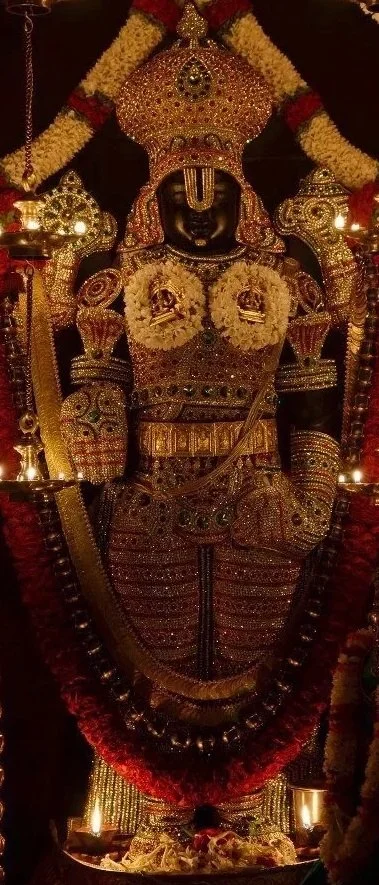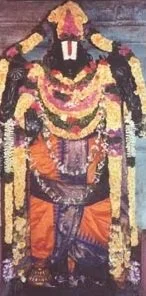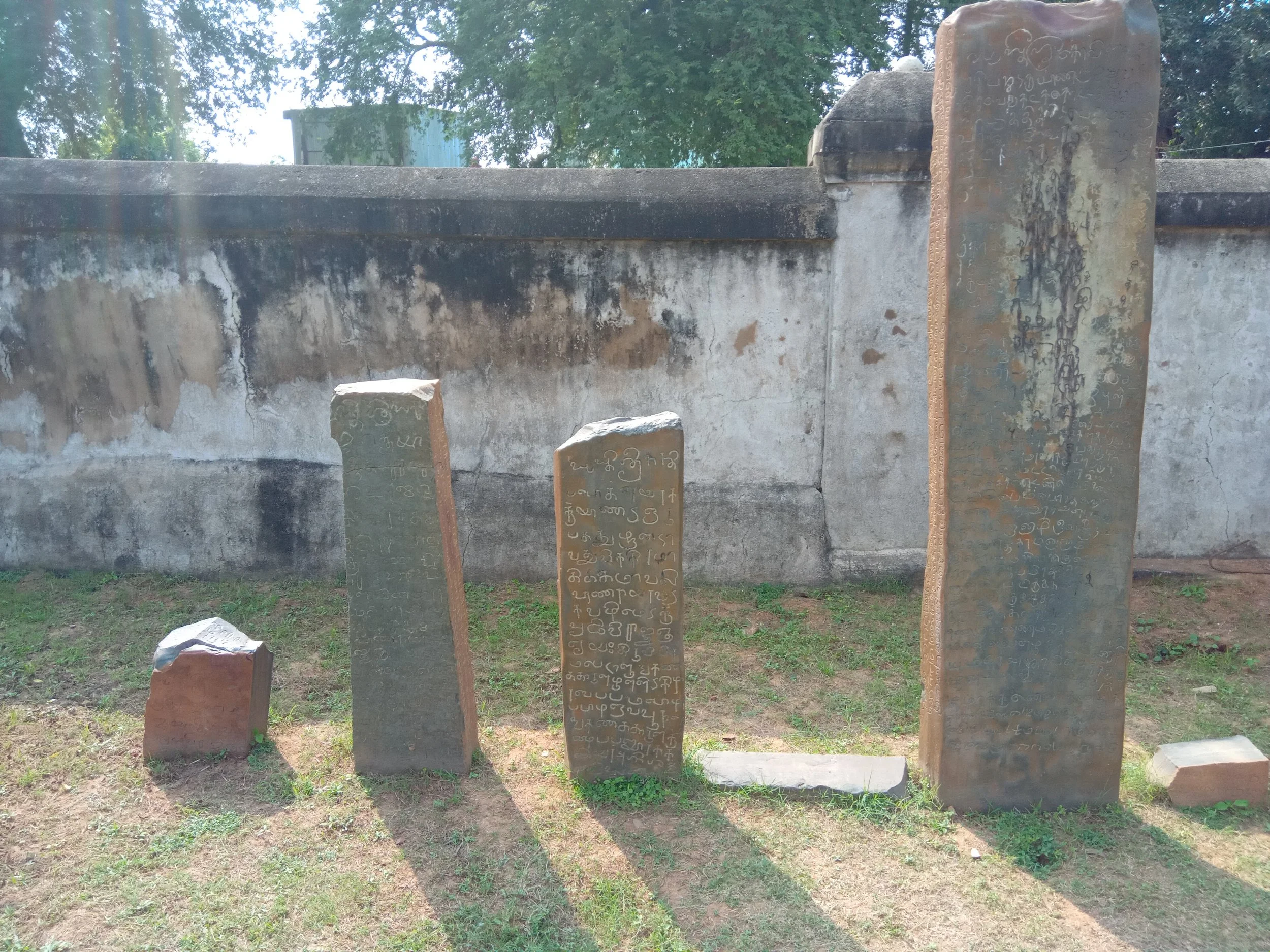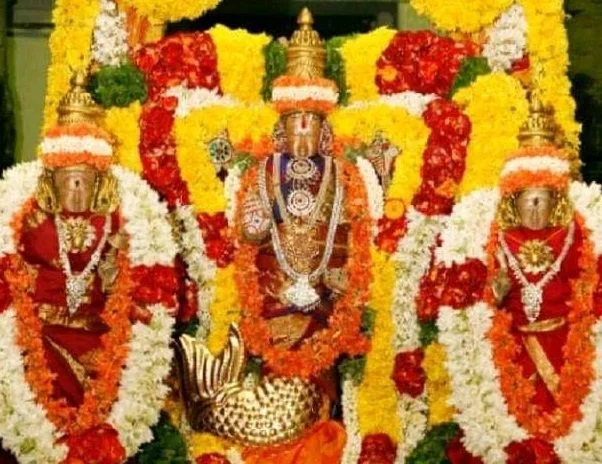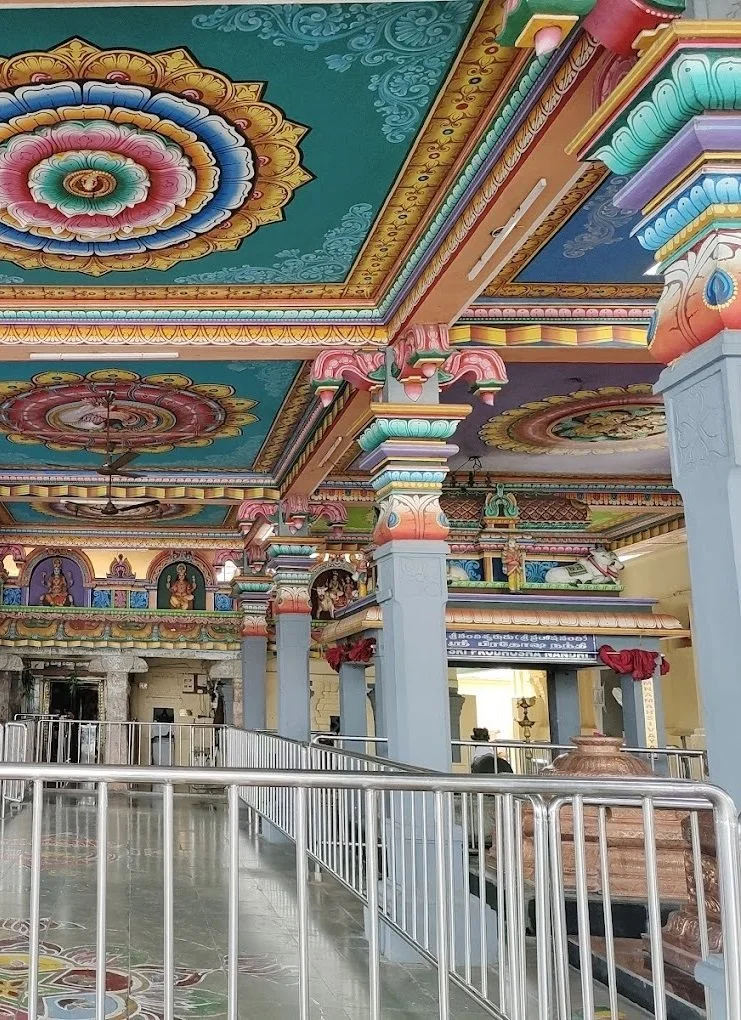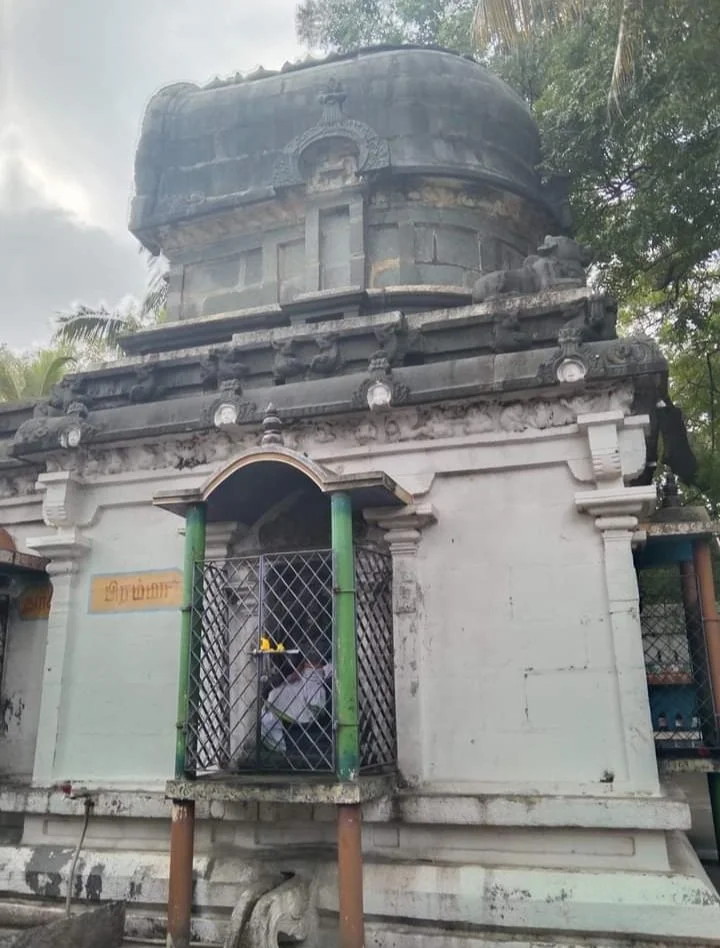Lesser-known temples near Tirumala Balaji shrine
Most of the temples listed below venerate forms of Vishnu, including Venkateshwara but also Veda Narayana in fish avatar and the reclining Ranganatha, with significant exceptions: Lakshmi in the Padmavathi, and Shiva in the Parasurameshwara and the Veerattaneshwara. Unless otherwise noted the parentheses indicate the form of Vishnu consecrated inside, unique in almost all cases, especially because the temple titles might seem repetitive.
So here’s the list excluding the Tirumala Balaji shrine, and radiating outwards: 1. Tirupati downhill’s Govindaraja (the reclining Ranganatha); 2. Srinivasa Mangapuram’s Kalyana Venkateshwara (standing, open right hand in varada-mudra—fingers pointed downward); 3. Tiruchanur’s Padmavathi; 4. Appalayagunta’s Prasanna Venkateshwara (standing, open right hand in abhaya-mudra—fingers pointed upward); 5. Gudimallam’s Parasurameshwara (housing one of the earliest discovered stone Shiva lingas in India); 6. Thondamanadu’s Prasanna Venkateshwara (seated, beside consorts Sridevi and Bhudevi); 7. Narayanavanam’s Kalyana Venkateshwara (standing, with sword); 8. Nagalapuram’s Veda Narayana (Vishnu in fish avatar); 9. Surutapalli’s Pallikondeshwara (reclining Shiva); and 10. Tiruttani’s Veerattaneshwara (Shiva).
Tirupati downhill’s Govindaraja
We visited the Anjaneya shrine right opposite first—with elaborate column carvings in the mandapa leading to the inner sanctuary.
Anjaneya shrine opposite
Now towards the Govindaraja.
The Govindaraja temple: the magnificent Vijayanagara-style entrance gopuram
Once you go in past the massive Vijayanagara-style east entrance gopuram, you will see a tall mandapa with slender columns adorned with lovely foliate designs.
Beyond: the main shrine housing Ranganatha, the reclining form of Vishnu.
Representative
Related shrines: Krishna as Parthasarathy (“Arjuna’s charioteer”) and Andal (the only female among the twelve Alvar poet-saints of South India). Afterwards, we sat outside in one of the hallways admiring the diverse array of fluted stone columns all around, of various shapes and designs.
Srinivasa Mangapuram
The Kalyana Venkateshwara temple here is a less crowded, more peaceful version of the Balaji shrine on Tirumala hill—temple lore invests it with equal auspiciousness.
Once inside, note the hemispherical roof over the main shrine—and the fine sculptures in the wall niches.
Vishnu seated on coiled serpent
As you go towards the inner sanctuary, try and prepare your mind to look beyond the framing, and all the “decorative” flowers and garlands—which really obscure the iconography—and focus on the details. Notably, Venkateshwara standing in sama-bhanga, the weight equally distributed on both feet; the open right hand in front in varada-mudra, fingers pointed downward; the front left hand resting on hip/upper thigh in kati-hasta; and the back hands holding the characteristic chakra and conch.
Further: the iconography is of course intentional and purposeful, following very specific theoretical guidelines described in various Shilpa and Agama treatises. Often readily translated into English as “sculpture,” the word shilpa is imbued with deeper implications. Stella Kramrisch in her article “Traditions of the Indian Craftsman” (more about her below) describes the multi-dimensional meaning of the word including: “art, skill, craft, labor, ingenuity, rite and ritual, form, and creation.”
Representative
You might reflect that in all salient respects the iconography is similar to that of the Venkateshwara at Tirumala: but clearly here you can approach a lot closer and arguably appreciate the finer details better. Frankly, I found the live sight in the inner sanctuary at Srinivasa Mangapuram nothing short of bedazzling. Flowers partly obscure in the representative picture above, but I particularly recall diamonds and precious gems adorning pretty much every visible space right down to—and covering—the feet.
Tiruchanur’s Padmavathi
A tradition kind of mandates a visit here after visiting Tirumala—which partly explains for me the rush of people crowding the Padmavathi.
Gilded square vimana topped by a hemispherical roof over the main shrine
Note that the goddess in the main shrine is seated—open right front hand in abhaya- and open left front hand in varada-mudra. The rear hands hold lotuses. Remarkably, while Venkateshwara is found mostly showing one or the other mudra exclusively—thereby necessitating visits to separate shrines—here Padmavathi proffers both simultaneously in one place.
Representative
Appalayagunta
The Prasanna Venkateshwara here prides itself on the deity in the main shrine proffering the abhaya-mudra (as opposed to the varada-mudra at the Tirumala Balaji—with some neighboring folks in the inner line taking extra pains to explain this very distinction to me).
In fact, this point is deemed central enough that sometimes the abhaya-mudra tag is included in the temple’s very nomenclature. Which makes sense, because in every other way the iconography is similar to that in Tirumala: where here also Venkateshwara stands in sama-bhanga. You do get to linger in the main shrine here a bit more though (which I imagine wouldn’t be a real possibility in a busier place).
Representative
A word about the pictorial representations: I opted for correctness and accuracy over most other considerations. (Given the very pervasive nature of our contemporary image culture clashing with the “no photography” rule in most Hindu temples, there’s a paucity of images while at the same time a kind of clamoring for any available representation—the only explanation for me that accounts for the plethora of images online labeled “Appalayagunta” which get the Venkateshwara mudra completely wrong.)
Gudimallam
With one of the earliest Shiva lingas discovered in all of India, the Parasurameshwara in Gudimallam holds the distinction of perhaps being the oldest verifiable Shiva shrine in the country still in active worship (about 2300 years old and counting).
The temple compound from outside (image courtesy Sarah Welch)
The site clearly comprises several layers of construction spanning the intervening centuries though—with inscription slabs dating from the Pallava and Chola eras now installed in the courtyard.
The compound therefore gets increasingly more ancient the closer you move to the center.
When we visited we did not take any pictures in the garbha-griha, although we spent several minutes there. Curiously apsidal in shape, the inner sanctuary clearly dates from a later period, reminiscent of similar 7th century Hindu structures we’ve seen in Aihole, Karnataka—themselves thought to evolve from earlier Buddhist architectural forms—housing a subterranean urdhva-retas (more on that phrase below) or “Gudimallam” linga from the early centuries BCE.
Again, the fact that the Parasurameshwara is still in active worship adds to the uniqueness of the Gudimallam linga. Practically all other early examples discovered so far—including the Bhita linga from around the same period—are relics now found only in museums. Most of these museums are situated in India, but also in the US—such as the Philadelphia Museum of Art and the LACMA in Los Angeles. Apropos, the museum page in Philly concisely describes the linga—much of which also applies in our case. https://philamuseum.org/collection/object/66133
Now here’s a bit more on that label urdva-retas. Effectively translating to “celibacy” (which for me immediately brought to mind the Lakulisha—a form of Shiva—sculpture on the walls of one of the temples in the Mahakuteshwara compound). George Michell had added the epithet “ascetic” to describe Lakulisha, for reasons unclear to me at first.
Here’s where Stella Kramrisch again helps, the pioneering European-American art historian and academic. Kramrisch lived and taught in India for nearly thirty years, and almost singlehandedly exhumed Indian art history from a kind of pervasive British disdain and disregard then in vogue. Much later, she also served as Curator of Indian art for many years at the Philadelphia Museum referred to above. (The Indian government honored her in 1982 with the Padma Bhushan.) Her clarifications about the meaning and significance of the Shiva linga—from both an iconographic but also a scriptural sense—are worth repeating here especially as you behold the relevant Gudimallam linga image, which is easy to find online.
So essentially, Kramrisch in The Presence of Śiva underlines this god’s paradoxical aspect—that the “ithyphallic representation connotes the very opposite”—as also exemplified by the ascetic Lakulisha in addition to the Gudimallam linga.
Thondamanadu
The Prasanna Venkateshwara temple here is modest but a little gem of a shrine.
As the plaque prominently posted right in front of the entrance outside tells us, the abhaya-mudra Venkateshwara here sits beside his consorts on either side (a double whammy of sorts in terms of distinguishing features from other temples in the region).
Nothing outside really prepares you for the striking effect of the inner sanctuary though: not least because of the almost double life-size scale of the icons. I usually find excessive sanctuary addends such as flowers and garlands over the top—to almost a disfiguring extent. Instead, true to the modest nature of the temple outside, the understated decoration here (not reflected in the representative pic below) won me over right away. In fact, when I walked in I found the sight breathtaking.
Representative: significantly fewer flowers-garlands when we visited, and the scale/magnitude of the icons imposing in real life
Narayanavanam’s Kalyana Venkateshwara
Look up to the passageway ceiling as you go in via the giant gateway: George Michell clues us in on “a kneeling soldier with a gun, shooting a prancing deer”—likely one of the first instances of a gun being depicted in Indian art, the gateway dating from 1541 (by which time soldiers in the Vijayanagara armies began using rifles, combating the Deccan sultanates).
As in Tirumala, Venkateshwara here stands in sama-bhanga, open right hand in varada-mudra. But as also befitting a groom, at Narayanavanam he is with a sword—for this is where he married his consort, Padmavathi, venerated in the neighboring shrine. That she is present in the same compound is also a unique feature of this temple.
Nagalapuram
Krishnadevaraya envisioned the Veda Narayana here as an ambitious, large-scale Vijayanagara-style temple project akin to the “big temple” in Sri Kalahasti—but was never able to finish it.
Still, the extant structures are impressive nevertheless.
The scale and grandeur is clearly evident as you walk around the compound inside.
The spacious and expansive precinct enclosing the main shrine
Fluted colonnettes
Notable stonework continues in the mandapa inside.
The main shrine was under balalayam when we visited—with the actual inner sanctuary closed for renovations, but we were shown utsava versions of the icons instead, Vishnu in fish avatar (Veda Narayana) clearly evident. Less than life size but still a few feet tall, these are termed “miniature” only relative to the main versions. Often cast in metal instead of stone, utsava icons are loaded onto the temple ratha (chariot) which goes around street-by-street in the vicinity during festivals.
Representative: utsava icons, Vishnu in fish avatar (Veda Narayana)
Surutapalli
Here also a modest outer shrine preceding a remarkable inner sanctuary holds true.
Everything I came across so far—including the below mandapa—suggested a kind of conforming modernity rather than type-defying antiquity.
Which impression changed for the better when I rounded the corner and peeked into the inner sanctuary. Not just the dimensions—the granite form of reclining Shiva’s head comparable in size to the priest’s torso nearby—but also the unique iconography was arresting (not really the figures on the wall, which are clearly later additions, but Shiva and Parvati). We usually associate Vishnu with the reclining form—but this is Shiva with Parvati (her outstretched hand reaching out) beside him.
Tiruttani’s Veerattaneshwara
Image courtesy Sai Sreevidya
Overshadowed by the much better known—and more crowded—Subrahmanya or Murugan shrine on a nearby hill, the Veerattaneshwara is attractively sited opposite the Nandhi river. The theme of a modest outer structure almost hiding a more special treasure inside continues here too.
The Pallava-era Shiva shrine inside preserves the original apsidal-ended roof (gaja-prishtha, or elephant-back). Note the front-carving with Shiva in white and Parvati in pink (George Michell suggests there’s little Skanda also in there somewhere, but hidden from us in the swathe of clothing).
Image courtesy Sai Sreevidya
Apsidal-ended roof (gaja-prishtha—elephant-back, image courtesy Sai Sreevidya)
The late Pallava-era sculptures in the wall niches are also outstanding.
Shiva as Dakshinamurti (image courtesy Venkataramana A)
Vishnu (image courtesy Sai Sreevidya)
For more info
Check out George Michell’s Southern India and Stella Kramrisch’s The Presence of Śiva.






